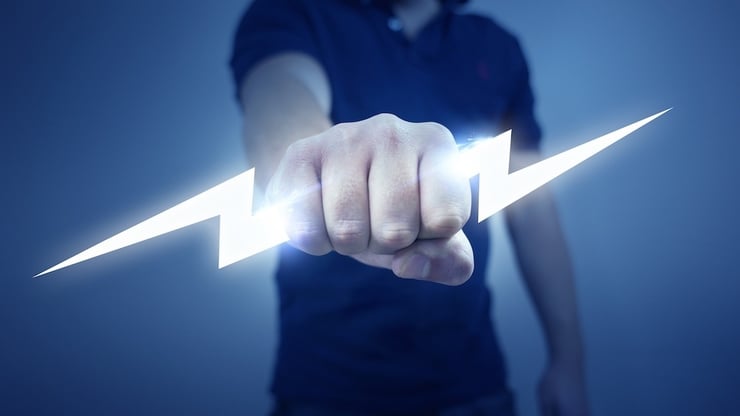
Electricity is cheap, but that's about to change. As smart meters are being installed in homes across the world, grid operators are aligning payment models with consumption patterns, resulting in variable and higher prices. In this article, we explore consumer impact, how it enables you to become your own energy company and how you can save money by doing so.
Energy history is at a tipping point as a new and growing breed of consumers, “prosumers”, become profitable energy producers for the first time. There are at least three drivers behind the, so-called, Prosumer Revolution:
- Profitability from, for example, installed solar cells, which many governments incentivise
- Smart meters (AMI), which make it possible to change how electricity is priced
- Consumption management and energy savings made possible through smart home technology
Energy efficiency 2.0
When talking about energy efficiency, we automatically tend to think in terms of cutting the number of kilowatt hours consumed. In the near future, however, the number of kilowatt hours used per unit of time will determine your energy bill, which is what we call power.
The reason for this change is a great need to invest in grid capacity, triggered by increased demand from, for example, the rise of EVs in place of fossil fueled cars. (Stanford University's Tony Seba predicts that by 2030 all vehicles on the road will be electric.)
Further, everyone consumes a lot power during the same times, especially in the morning and between 5 and 9 PM. Meeting peak power periods demands increased grid capacity. To encourage off-peak consumption, spread electricity loads and increase supply, new tariff structures will reward those who reduce consumption during peak periods.
In Norway, the Norwegian Water Resources and Energy Directorate (NVE) announced that from 2019, grid operators can charge their customers based on subscribed consumption. This means that consumers must inform grid operators of how much electricity they wish to be able to draw from the grid in any given unit of time. This will then determine transmission costs, which constitutes more than half our electricity bills today.
If you exceed your subscribed consumption (power), it will cost you. Exactly how much is up to each grid operator but the price difference between low and peak periods can be ten times. The important decision will be whether to increase your subscribed consumption to avoid surcharges or to reduce your consumption.
Control Your Loads
To limit your electricity costs as much as possible you need to learn how to manage your power loads (EVs and high-power domestic appliances). Managing loads is about moving them. You can program your water heater, for example, to produce hot water during the night, when electricity consumption is low, or you can program it to turn off whenever you use your cooking range.
By making sure your water heater isn’t running on full power while you're charging your EV or cooking dinner, you can even out your consumption and maybe also adapt it to your solar power production. As an example, you could program your water heater to start heating when solar power production is peaking.
During the night, few home appliances use power. If your electrical heating system has a night setback feature, you can configure it to make your room heating and water heating run in turns and not simultaneously.
If you have installed solar cells, when production is highest during the summer, you can sell excess energy back to the grid. Alternatively, you can store excess energy in a battery or shift your consumption to high production periods. Compared to selling electricity back to the grid, the last option is usually more economical. With the changes in operator’s pricing structures, producing and storing energy will become much more relevant than it is today.
Not sure what you're going to spend your surplus energy on? You could, for example, heat your water more than usual and kill legionella bacteria in your hot water tank, a routine job which is usually run once a week. You could also charge your EV or store electricity in a battery, which in turn charges the EV at night.
When you control your loads, produce your own energy and you own an EV, you’re getting pretty close to what we could call a micro-scale energy company. With each step, you become increasingly independent of the grid.
You could also consider your heating solution. You might have a heat pump or another solution that allows you to store thermal energy: a water heating system, or a tiled floor with heating cables. If so, you can heat them more than usual and then turn them off for a while to leverage the thermal energy storage capacity without noticing any difference.
Being Your Own Energy Provider is All About Being Flexible
Being your own energy provider isn't only about producing electricity or reducing your energy consumption. You also need to do it flexibly. The grid impact of shifting your consumption is equivalent to you producing the same amount of energy. Being able to manage when your EV charges, frees-up the equivalent amount of power drained by your EV, water heater or heating cables. Combined, this accounts for a huge amount of kilowatts that you can sell back to the grid during peak periods.
It is, therefore, important to know your flexibility and consider how to can capitalize on it when acquiring new appliances. In just a few years, energy companies will have an increased willingness to pay you for freeing-up your energy consumption flexibility.
Being flexible and sharing your consumption status with your grid operator will have a price tag (meaning you could profit from it). If, for example, you go away for the weekend, you’ll have a much greater flexibility than normal. If you share this with your electricity provider, you’ll save additional costs. You may be paid for this or enjoy a cheaper energy bill.
As prosumers, we must then start taking the same considerations into account as an energy company. We must always strive to achieve balance. We must buy energy at the right time and make sure that our combined load isn't too high. Making the same decisions can done automatically with the aid of digital tools and apps.
What Immediate Steps Should You Take?
First, make your home smart. It’s already possible to control your loads, so that’s a great place to start. You can manage everything from your heating cables, electric wall heaters, radiators, and lighting to EV chargers. All you need is a “gateway” that connects to your router or modem. This device, which looks like a little box, communicates with appliances or a thermostat. If you chose an EV charging station equipped with WiFi, it can also be managed.
Just having an EV charging station that avoids charging when you cook dinner or while your water tank is heating, will save you a lot of money. It might also give you more available effect during nighttime because it can leverage the combined available power in your house while you're sleeping.
You also need to consider communication and wireless control when buying new appliances. If you're going to buy a charger for your EV, don't buy the cheapest one. Get one that communicates with your smart home. You can then manage it from your smartphone manually or configure it to run during the night to avoid peak consumption.
Athough the domestic battery market is immature today, batteries will come into play later. When they do, transferring electricity from your EV to your home will also be possible. Consequently, it’s reasonable now to plan for how and where you can place one in your home.
Right now, convenience is the greatest benefit you can reap by becoming your own energy company. When AMIs and new payment structures come into play, there will be significant financial benefits. Of course, when that time comes you’ll have already made your home smart and you know how to manage your energy loads.
Electricity consumers who fail to manage their loads and utilize their flexibility are certain to have much higher energy costs overall. Those who do are certain to cut their energy costs compared to today. If you have any questions, I suggest contacting your electricity provider to ask what load management solutions they can offer you today.




.png?width=250&height=64&name=Grid%20Vision%20logo(250%20x%2064%20px).png)